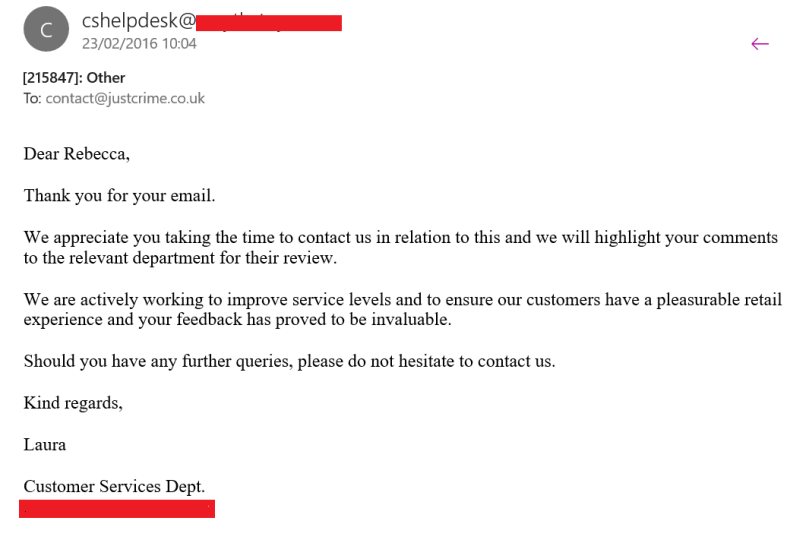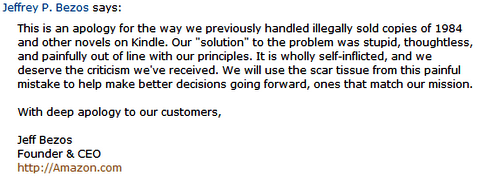How to Deal With Difficult and Angry Customers (15 Tips and Examples)

Table of contents
Dealing with angry customers is a litmus test for your customer support team. It’s something that can make or break your brand, in today’s day and age.
And despite the millions of dollars companies invest in customer service, it’s probably safe to say that a good share of interactions with customer support still leaves customers angry and dissatisfied.
For instance, here’s a classic case when a billion-dollar corporation managed to screw up:

The most glaring mistake from British Airways was not that they lost a bag, but rather that they took seven hours to reply to a tweet! This guy went ahead and spent a whopping $1000 to promote the tweet and publicly defame the airlines.
So, let’s try and understand why exactly customers get angry.
Table of Contents
- 3 reasons why customers get angry
- How to deal with difficult customers
- 1. Approach with a Zen mind and compassion
- 2. Calm them down by asking questions
- 3. Let them know you understand the problem
- 4. Apologize for the situation
- 5. Use positive language to reinstate trust
- 6. Personalize the resolution
- 7. Keep them in the loop at all times
- 8. Avoid taking it personally
- 9. Offer alternative support channels if one of them is busy
- 10. Offer compensation wherever possible
- 11. Follow up and express gratitude
- Tips for dealing with angry customers on social media
- What to avoid when dealing with angry customers
- Wrapping up
3 reasons why customers get angry
The root cause of your frustrated customers is that they feel disrespected. Unknowingly, companies apply customer support practices that are disrespectful to customers in one way or the other.
Guy Winch, the author of Squeaky Wheel, says: When it comes to the psychology of good customer service, customers have only one sensitive trait – respect.
Let’s dig deeper.
1. Companies have little respect for customers’ time
Time is a commodity everyone values. Every time a customer faces a problem, they lose time (a) finding out contact information, (b) maneuvering through complex websites and support sections, and (c) eventually being able to reach an actual person who will put them on hold or an email address which fetches a reply after ten hours.
Let’s be honest here: a lot of companies suck at dealing with irate customers. Even when they do manage to solve a customer’s complaint, the enormous amount of time that is wasted in the process leaves them irked.
It’s understandable that coming up with a solution might involve reaching out to a few people or going back to the handbook. However, the customer was not ready to face a problem in the first place – every extra minute spent is a minute wasted.
It gets even more annoying when a customer has to talk to multiple support reps. The joy of receiving a solution is usually overshadowed by the test of patience they had to take during the episode.
Hiver’s Shared Inbox will ensure your customers never face delays again. It will also help your support team collaborate better.
2. Companies have little respect for customers’ dignity
Let’s face another hard truth: companies do not always respect the customers’ dignity. In a market where treating tough customers is a priority for most businesses, there is a surprisingly high number of incidents when companies come across as mean, rude, and rough.
Chip Wilson, the CEO of Lululemon, a lingerie and workout retailer is a classic example. The guy says most of their unhappy customers were just too fat to wear their clothes!
Below are the headlines from around the internet after he made the derogatory comment:

Such instances are a blow to customers’ dignity – it is natural for them to get angry every time they face a problem.
3. Companies have little respect for customer’s intelligence
You start by coaxing the customer: you value them and that they mean everything to you. You tell them that your company believes in customer satisfaction. You tell them that the product was designed to solve all of their problems.
Now, when they face a problem with the product, you put them on hold for thirty minutes; you send them automated email messages from the support email address; your reps act hostile while trying to make the customer understand a solution.

Later, when it comes to displaying customer loyalty, you send them knick-knacks such as pens and t-shirts with your company logos. It does not really convey that you respect your customers’ intelligence.
Customers would rather have you treat them like adults. Solve problems diligently – this engenders loyalty more than anything else.
Respect is the cornerstone of building trust among customers. This is one concept that needs to be propagated across the layers of an organization.
How to deal with difficult customers
Customers – both unhappy and difficult ones – are a source of valuable insight. Shunning away from the tough ones is losing out on a big learning opportunity.
Less than 4% of your angry customers will let you know about their frustrating experience. 96% of them won’t share their annoyance, and 91% of them will churn.
The key is to learn as much as you can from the customers who are unhappy and incorporate the same in your business decisions. It is, however, equally crucial to deal with angry customers in a way that sets them up for long-term loyalty.

In addition to putting your customer service skills to use, here are five tips that can help:
1. Approach with a Zen mind and compassion
In scenarios when a customer is angry, our natural reaction is to be defensive.
Our brain enters ‘fight or flight’ mode, and this is exactly when we have to take a step back and calm ourselves down. Here are some ways to maintain a zen state of mind when dealing with angry customers:
- Practice deep breathing: Deep breathing can help calm the nervous system and reduce stress. Take slow, deep breaths during or before interactions to help manage your emotions.
- Focus on solutions: Stay focused on finding solutions rather than dwelling on the problem. A problem-solving approach can help shift the conversation away from negativity.
- Implement stress-relief techniques: Stress-relief techniques such as mindfulness exercises, progressive muscle relaxation, or quick stretches can help you manage stress and stay calm throughout the interaction.
- Be empathetic: Try to listen to the customer’s concerns and express empathy actively. When customers feel understood, it can defuse tension and make them more receptive to solutions.
California Tortilla certainly throws in some Zen here:

2. Calm them down by asking questions
It is psychological fact that you cannot change even a relaxed person’s mind, let alone an infuriated person’s. Arguing with the customer will only make the situation worse, even when their claims are actually unfounded.
So, how would you handle a dissatisfied customer?
Ask questions. While dealing with unhappy customers, move straight to asking questions about the problem they’re facing.
Practice active listening. Focus on understanding what the customer is saying and don’t cast any judgment at this stage. All you have to do is understand the details of the problem.
It is a good tip for dealing with angry customers before you can actually move to a rational resolution.
This is also a good time to thank them for pointing you to the issue. A bit of ego-boosting will open doors to a rational conversation.
3. Let them know you understand the problem
Letting an angry customer at hand know that you have not only heard but understood their concerns is a great way to defuse a tense situation.
Summarize their situation and concerns back to them – this way, they know that everything they wanted to convey has been understood. One way to do that is by using their own words when describing their problem back to them.
This is also the stage where you can start building some trust with your customer.
Questions like “Did I get that right?” or “Is there anything else that concerns you apart from this?” are great for seeking confirmation and reaching a common ground to start resolving the solution.
What does that do? It lets them know that their feelings towards the issue are not dismissed and are taken into consideration.
4. Apologize for the situation
More often than not, the customer would be angry about something that was never under your control. The human tendency is to shift the blame.
A company might respond to an infuriated customer, saying it was not their fault. All this does is shake the faith the customer has in your brand.
It doesn’t get much better or more direct than Jeff Bezos’ apology for how they handled pulling copies of 1984 and other novels off Kindles:

You have to train your customer service team to use the same principle while dealing with angry customers. They have to remember that they are the face of your company. A rep has to willingly take responsibility for the customer’s issue at hand.
An apology will help defuse the situation quickly and open doors for resolution. It also tells them that you regret that they had to interrupt their day to reach out to you for resolution.
Here are some ways how you can write effective apology emails to your customers.
5. Use positive language to reinstate trust
Put your communication skills to use to handle a dissatisfied customer tactfully. They should know that you are both on the same side here.
Starting with a positive statement such as, “We’re going to solve this together,” will help them feel reassured about the resolution process.
Ask them, “What would you consider a fair and reasonable solution?”
Asking this helps set the right customer expectations from the start. At the same time, you have to watch out for patronizing phrases such as:
“How can I help you” or “How can I make you happy?”
6. Personalize the resolution
No customer wants to feel like they’re talking to a bot – especially not someone who is angry or frustrated. Here’s what you must never do:
- Have a script in hand that repeats the same, non-conversational sentences over and over again.
- Let chatbots handle the interaction.
- Not include them in the solution-seeking process and go for a one-size-fits-all approach.
Instead of making these email mistakes, have a personalized, human interaction with them – they will appreciate it. Use their name in the conversation wherever possible.
For instance, instead of saying, “We apologize for this. We are committed to resolving the issue”, which sounds very much like it’s taken from a template:
“I am extremely sorry for the situation, Anna. But please know that I will work with you for the best possible resolution for this.”
But just using their name in the conversation is not what personalization is all about. Using customer history and referring to relevant information they might have mentioned in previous interactions are essential to truly personalize the interaction.
Do not forget to include your customer in the solution-seeking process. For instance, if a customer is dissatisfied with the quality of a certain product they ordered, you can ask them:
“I apologize that the quality did not meet your expectations, <first name>. But please be assured that we will find a solution that works for you.
Looking at your purchase history, I can see that you have purchased <product name> previously. Would you like me to go ahead with that as a replacement, or do you have any specific preferences you have for so that we can explore some alternatives?”
This will let them know that you are not just another customer to them — and doing your best to find a solution that aligns with what they want.
7. Keep them in the loop at all times
One thing you need to keep in mind when dealing with angry customers is to keep them in loop every step of the way.
For instance, if the resolution is going to take some time because you need to contact the engineering team, state that clearly to your customer:
“I will need some time to get more information from the engineering team on your account. Would it be okay if I called you back in a couple of hours with an update, Paul?”
This way, even when there’s a delay, they have a clear understanding of what’s taking time. The delay is not due to indifference on your part, which they might assume otherwise if you don’t communicate clearly. Let them know you are actively working on the solution while you are away.
While it’s essential to provide clear timelines, it’s equally important to stick to them.
Here’s where investing in helpdesk tools that allow you to collaborate with other teams seamlessly will ensure that you can resolve issues much faster.
Hiver’s Notes feature enables support teams to collaborate seamlessly
With Hiver, you can collaborate with your teammates more efficiently. Take the instance from earlier, where you had to reach out to the engineering team for more information.
Hiver’s Notes feature allows you to simply tag the relevant person from the engineering team and leave a message, right where you are attending to customer emails. This will save you time that would otherwise be spent on reaching out to them personally and giving them context.
8. Avoid taking it personally
Dealing with an angry customer who is very vocal about their dissatisfaction with your services can be pretty difficult. They might be loud at times or use hostile language, which might seem directed at you at the moment.
In such instances, it’s extremely important to understand that everything they say is directed at the product or service and not you.
If you get emotionally involved with the situation, it could lead to you getting defensive and even losing your professional tone.
Instead, stay calm, and in case the customer is growing more agitated or resorting to personal attacks, restate that you are here to help:
“I understand you’re upset with the experience, Karen. But please know that I am here to resolve this for you. Could you please help me with some more information…”
9. Offer alternative support channels if one of them is busy
Sometimes, one of your support channels might be busy, understaffed or simply not working. When a frustrated customer tries to reach out to you on that channel, it can make the situation worse when they don’t receive a response in time.
In such situations, offer them other channels to choose from so that they don’t have to wait endlessly.
For instance, if you are short on agents to attend customer calls, send an automated message to all the customers trying to reach you on calls with other ways they can reach you.
An even better approach to tackle such situations is to proactively reach out to your customers from your end from another channel instead of waiting for them to reach out to you again.
See how this customer is very angry about waiting endlessly on a call for an agent:
In such a scenario, where agents arming phone support are busy, ensure you direct urgent queries to other channels such as live chat.
Amazon does a good job when dealing with such scenarios:
This is also why it’s essential to have multiple support channels, such as live chat or knowledge base to ensure you can reduce the friction in communication as much as possible.
10. Offer compensation wherever possible
Time is money. If a customer has invested a lot of time to get an issue resolved, or has faced a severe issue with your product or service — a mere resolution will probably not cut it.
72% of the customers plan to switch after a negative support experience. This is why you might need to go the extra mile to keep the customer satisfied and stay with your business – especially when the customer is angry to begin with.
You can offer discount vouchers or a complimentary product to compensate for the issue they had to face, or the time they spent to have it resolved.
Something like what Pret did here:
A discount voucher also creates some stickiness to your business — meaning they would want to make more purchases to redeem the voucher and give your business a second chance.
11. Follow up and express gratitude
The goal of every support interaction must be more than just addressing your customer’s needs and concerns. The actual measure of success is whether you have been able to preserve the investment you’ve made in the customer.
Ask your customer a very straightforward question: “Are you satisfied with the solution?”. It goes a long way in showing that you care.
It’s surprising to see most companies in a hurry to close tickets. The most common parting note I have come across is, “Is there something else we can do for you?”
You do not have to sound like you’re doing the customer a favor by solving their problem!
It’s a great idea to express a little gratitude at the end of customer interactions and say thank you.
These customers have probably helped your team members discover a few areas of the product that did not perform the way they were supposed to – thank them for that! Do not stop at just one follow-up to the customer’s. Reach out to them in a month to see if everything is working fine.
Tips for dealing with angry customers on social media
If you search for “horrible customer service” on Twitter, you will land on a seemingly never-ending list of tweets of customers sharing their frustrations.
These tweets also reach your prospective and current customers, which might affect your brand’s image.
This is why it’s important to engage and resolve angry customer tweets or comments on social media. But handling angry tweets can be tricky at times, especially when the conversation is happening on a public forum.
Here are some tips for when you’re dealing with angry customer complaints on social media:
1. Check if the complaint is valid
People can say all sorts of things on social media. Some of these might not be serious or just don’t need your attention.
For instance, if it’s simply a funny rant, you can choose to ignore it:
Understanding the gravity of the concerns shared on social media will help you filter out which ones need to be responded to as soon as possible and which ones can be ignored — giving you more time to address and resolve more important issues.
2. Offer some comic relief
Social media opens your business to a wide audience. It’s also a great platform to show your brand personality and engage in some humorous exchanges.
Sometimes, a little joke can help defuse the situation and make your audience laugh a little. For instance:
While David here might need to be more careful with seat selection the next time, Ryan Air was able to clear the confusion hilariously, garnering them over 11M impressions and thousands of likes.
This wouldn’t have been the case if they simply replied with a generic response.
The key here is to understand when to sound humorous and when it is an absolute no-no. For more serious complaints, this approach might backfire.
3. Take the conversation private
If a complaint on social media is particularly rude and talks about a serious issue, it’s best to take the conversation private.
This is because once you respond to, say, a tweet, it is visible to all your followers — which means it reaches more people.
Instead, once you come across such complaints, the best thing to do is to take it private. Either DM them or ask them to DM you with more information on the issue.
4. Keep your customers in the loop
Some days, your server might be down, or your shipments may be delayed due to various reasons.
This might lead to a barrage of complaints on social media where people are either asking other users if they are facing the same problem or sharing their own experiences.
Replying to hundreds of tweets and posts is clearly a daunting task.
In such situations, let your audience know that there is a problem, and once the issue is resolved, notify them again. Here’s how Goodreads kept customers in the loop in a similar situation:
What to avoid when dealing with angry customers
1. Ignoring or dismissing their concerns: Avoid the mistake of disregarding or downplaying the customer’s anger. Every complaint should be taken seriously and addressed promptly to prevent further escalation. Avoid using negative or dismissive language that can escalate the customer’s anger.
2. Neglecting to apologize: Failing to apologize for the inconvenience or frustration caused can exacerbate the customer’s anger. A sincere apology demonstrates empathy and acknowledges their experience
3. Engaging in arguments and taking them personally: Avoid getting into arguments or becoming defensive. Arguing with the customer will only intensify the situation. Remember, their frustration is directed at the situation, not at you as an individual. Stay calm and focused on finding a resolution.
4. Making promises you can’t keep: Avoid making promises or commitments that you cannot fulfill. This will only translate into distrust when the customer interacts with you next.
5. Redirecting the customer excessively: Avoid transferring the customer from one support rep to another excessively. While escalating to a higher level may be necessary in some cases, strive to provide a resolution within your capacity first.
6. Failing to follow up: Neglecting to follow up with the customer after their complaint has been addressed is a common mistake. Following up shows your commitment to their satisfaction and provides an opportunity to ensure that the resolution meets expectations.
7. Interrupting or not actively listening: Avoid interrupting the customer while they are expressing their concerns. Active listening is crucial to understanding their perspective fully.
8. Treating every customer the same: Avoid using a one-size-fits-all approach when dealing with angry customers. Each situation is unique, and tailoring your responses to the specific customer and their concerns can lead to more effective resolutions.
Wrapping up
There is always a way to defuse a difficult situation with a customer. What separates the best support systems from others is their ability to transform angry clients into satisfied customers.
Science shows that to truly become a master on how to calm down an angry customer, you must be able to identify and acknowledge where they are coming from.
Empathy is key.
More than anything else, the customer wants to know that they’re being treated as a real person.
But turning a negative customer experience into a positive one is just the first step in building customer relationships. Go a step ahead and discover how to earn a loyal customer base.

































